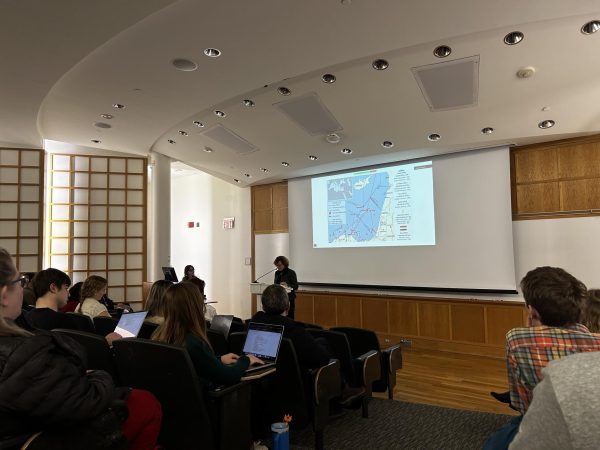Cloverfield: Two Guys’ Opinions
I left the monster film Cloverfield yesterday feeling exhausted, yet impressed. With a little too much candy in my system, I walked out of the theater in a daze, fully convinced that I too may be running for my life at any second should some ferocious beast choose to attack Hamilton over Manhattan. Why I ever could have thought this is now beyond me, but I can at least attempt to make an educated guess as to why I found the movie to have such a lasting effect. In the end, I’m pretty sure it wasn’t the candy playing games with my head.
But what was it exactly that I was so astounded by? After trying to clear my mind of the stereotypes of bad monster movies, I’ve come to realize that a good monster movie should leave this kind of impact on the viewer. Still, I find myself scratching my head without an answer: what made Cloverfield a good monster movie?
Was it the plot? Definitely not, considering that even Cloverfield cannot escape all of the stereotypes of monster movies. Although it is customary to at least give a basic outline of the plot to any movie being reviewed, the plot to Cloverfield (or lack thereof) can be summed up quite quickly. Nevertheless, I’ll make an earnest effort to give you the longer version: During a surprise going-away party in his Manhattan apartment, a young mid-twenties workaholic named Rob and his friends find themselves terrified by mysterious flickering lights and tremors that have interrupted their fun. As they reach the roof of the building, they are horrified to see that New York is (surprise, surprise) under attack by some strange, unidentified monster. To complicate matters, Rob has just found out that the woman he loves, Beth, has a new boyfriend. Rob must not only save himself but must also reach his love interest before all is lost. Will he save Beth and confess his love to her before it is too late? Will he make it out of New York alive? Does the audience even care?
I think it’s safe to say that we can cross plotline off the list. But what was it then?
What made Cloverfield so different from a typical popcorn flick? The answer lies in the camera work. Shot through the first-person perspective, the film is actually presented as a U.S. government-intercepted tape displaying footage of the monster attack “caught on tape” by the camera of Rob’s best friend Hud. Like The Blair Witch Project, Cloverfield successfully uses this strategy to give the audience a more personalized experience, as if they too are running for their lives.
Equally impressive, and equally astounding, however, is the fact that unlike most monster movies, Cloverfield was made on a budget that some Hollywood executives would consider to be chump change. Produced at only $25 million, I find it absolutely amazing that I was as deeply glued to the screen by Cloverfield as I was by Peter Jackson’s $200 million King Kong. Few movies, even ones far more expensive than Cloverfield, have left me as satisfied with my $4.75 investment as Cloverfield did.
So, it’s no Oscar flick… not that it’s trying to be one or anything. But for a good time at the movies and a good example of a new age in Hollywood, I highly recommend Cloverfield. Produced by J.J. Abrams, who also produces the television series Lost, Cloverfield makes me excited to see what’s next in Abram’s vision. Rating: 8/10.





